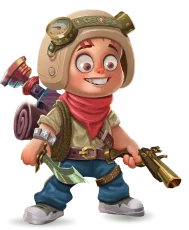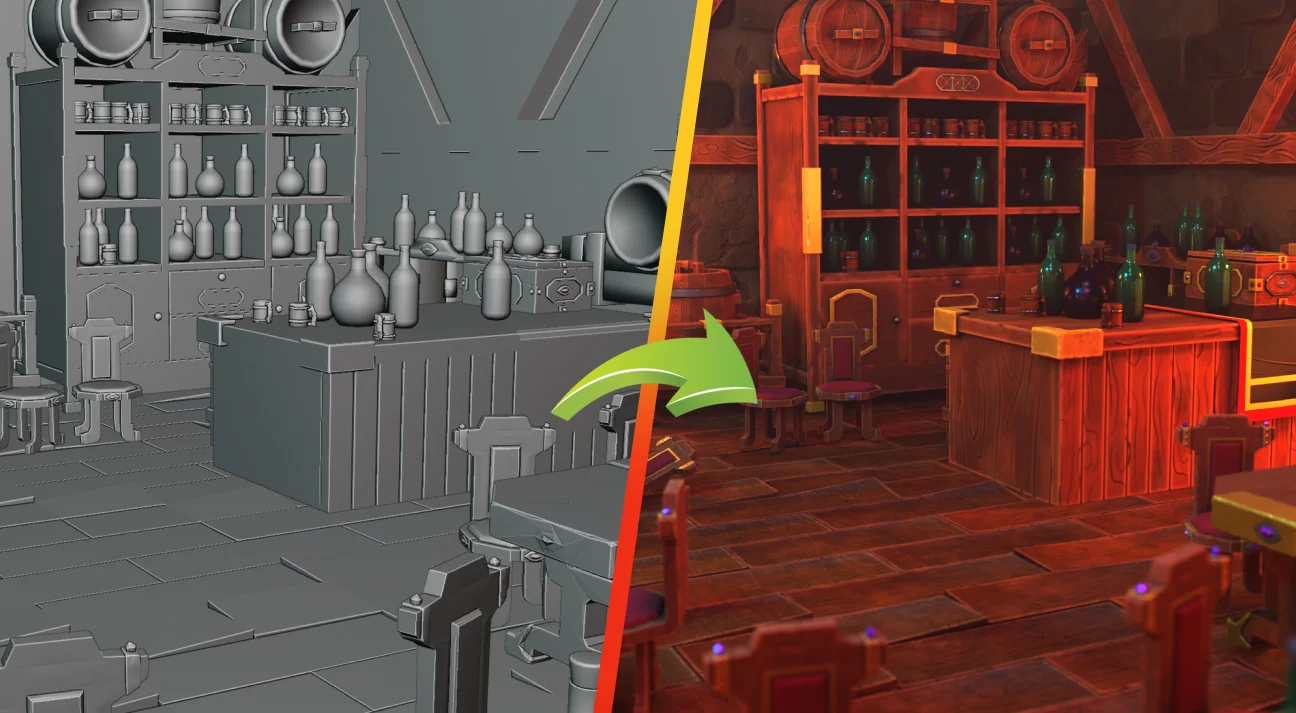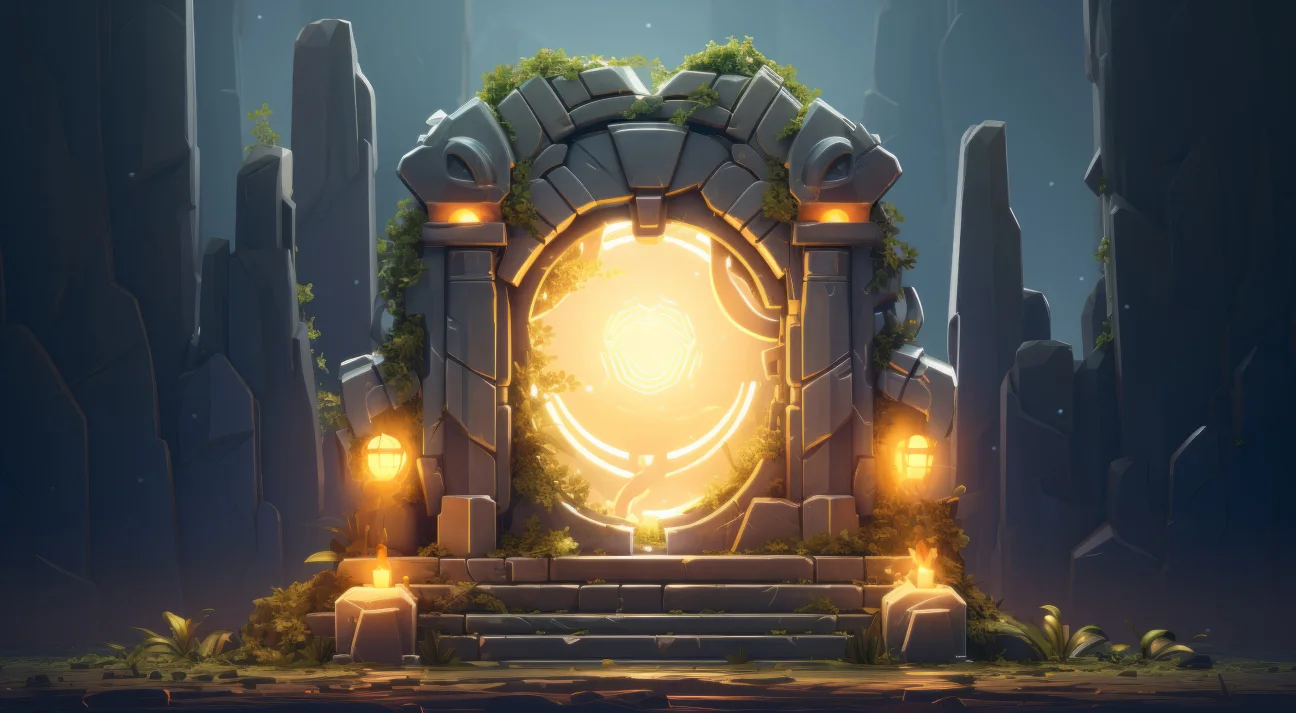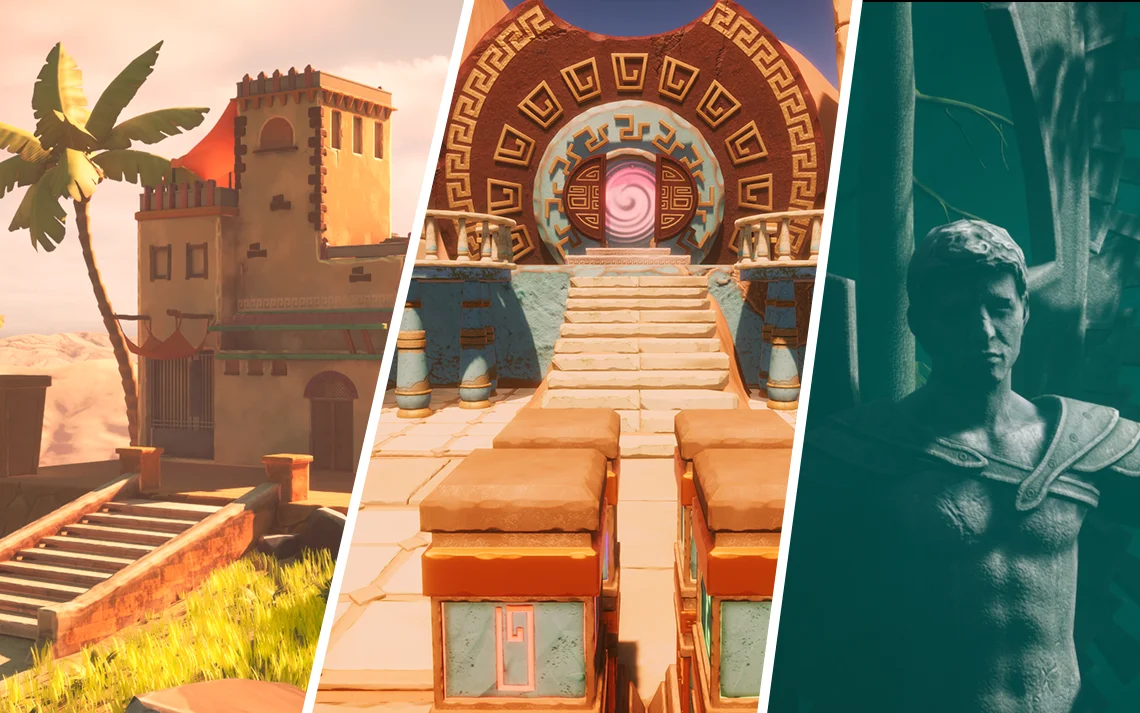
Game Environment Modeling – Unveiling Secrets to Keep Players Engaged
Do you know why popular games like Fortnite, PUBG, and games like GTA Vice City are so popular? Even if there’s nothing to do for a few seconds in the game, you still enjoyed exploring that game arena, haven’t you? That’s the game environment which kept you interested in exploring the game.
- What Is Game Environment Modeling?
- Types of Game Environment Modeling?
- How Is Game Environment Modeling Different For Different Platforms?
- Essential Building Blocks in Game Environment Modeling
- Game Environment Modeling Considerations
- Guide to Game Environment Modeling
- Game Environment Modeling Challenges
- How Can 300Mind Assist You In Game Environment Modeling?
- FAQs on Game Environment Modeling
What Is Game Environment Modeling?
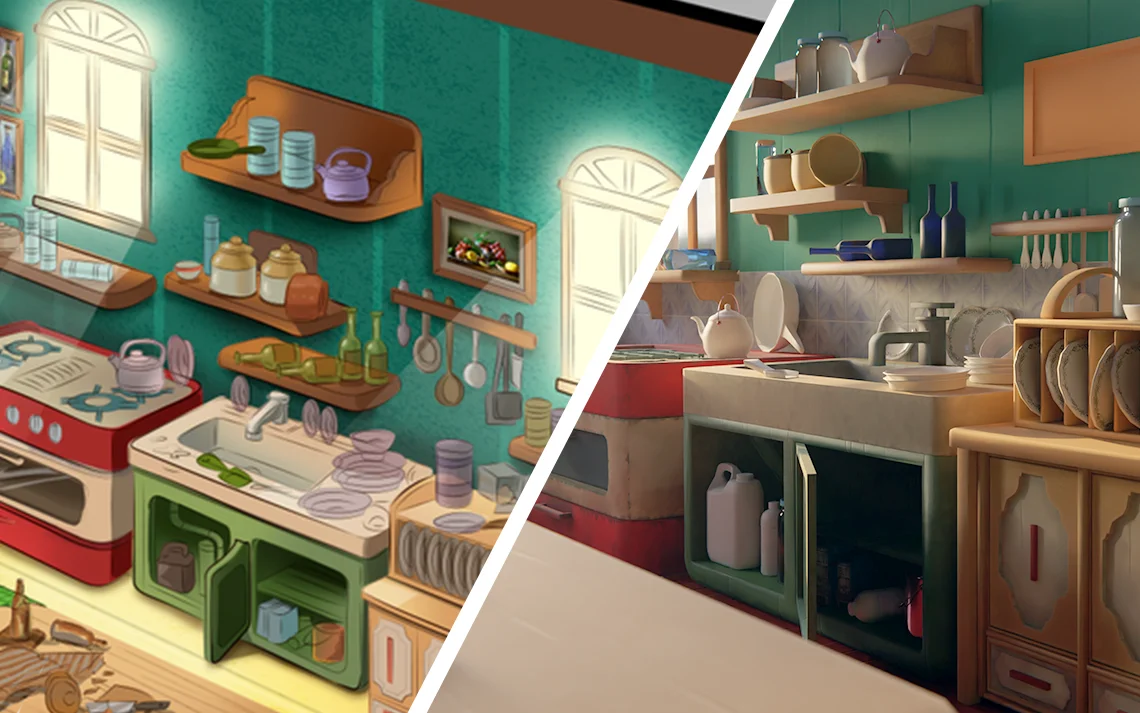
Game environment modeling stands for crafting 2D or 3D game arenas, playable locations where your digital video game story takes place.
This practice focuses on the detailing of designing and building various game environment-based elements, including game characters and non-playing characters, terrain and landscapes, architectural objects and structures, interaction and mechanics, and a lot more that help you illustrate a compelling game storyline as you’ve thought of.
In short, game environment modeling aims to create immersive and fascinating environments that can offer a stylized backdrop for the gameplay and game narrative.
Types of Game Environment Modeling?
You’d be surprised to know that, but yes, you can design the game world of your imagination in more than one type. So, to know the details, let’s explore the game environment modeling types:
1. 2D Game Environment Modeling
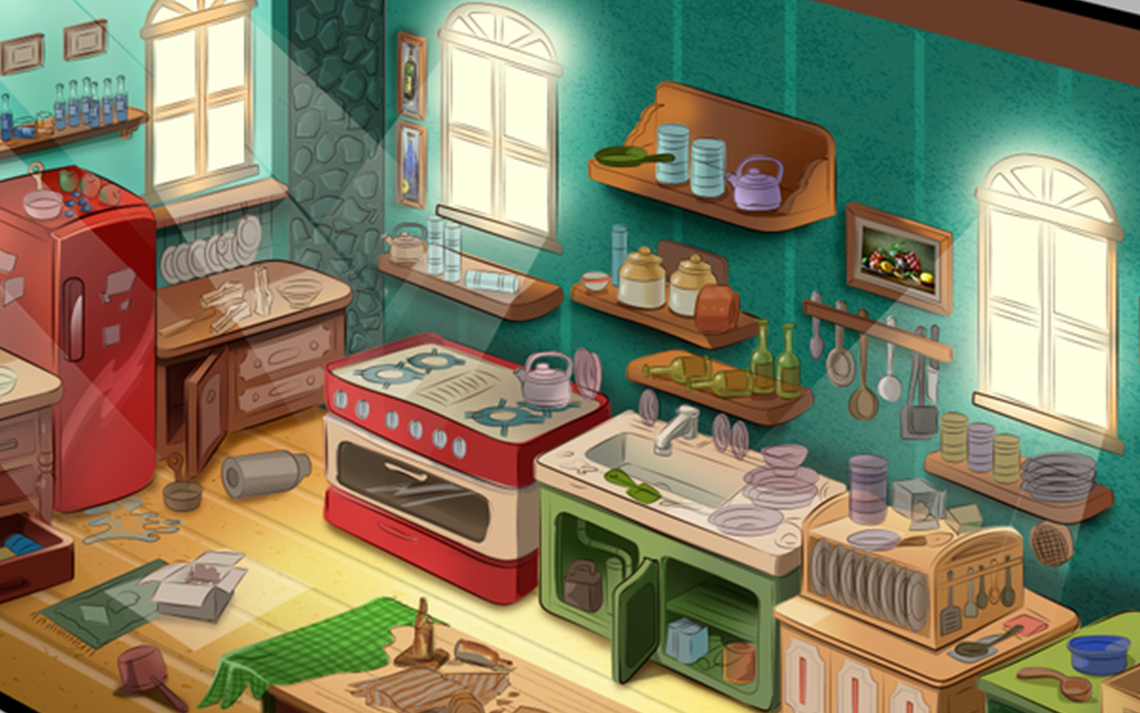
The 2D game environment modeling features two-dimensional objects, terrains, and various other elements, takes the gameplay on an amazing journey to nostalgia with its retro-stylized aesthetics.
Unlike 3D game modeling environments, 2D environments may lack visual depth and realism, but they have their own charms and advantages for the game creators. Well, 2D game environment design is not that easy, but when compared to 3D game modeling, it is a lot easier and requires less computational power to render.
Though with some limitations in the 2D game environment design, 2D artists play quite a creative role to create game environments for your 2D game development concept that are captivating for the players to explore.
2. 3D Game Environment Modeling
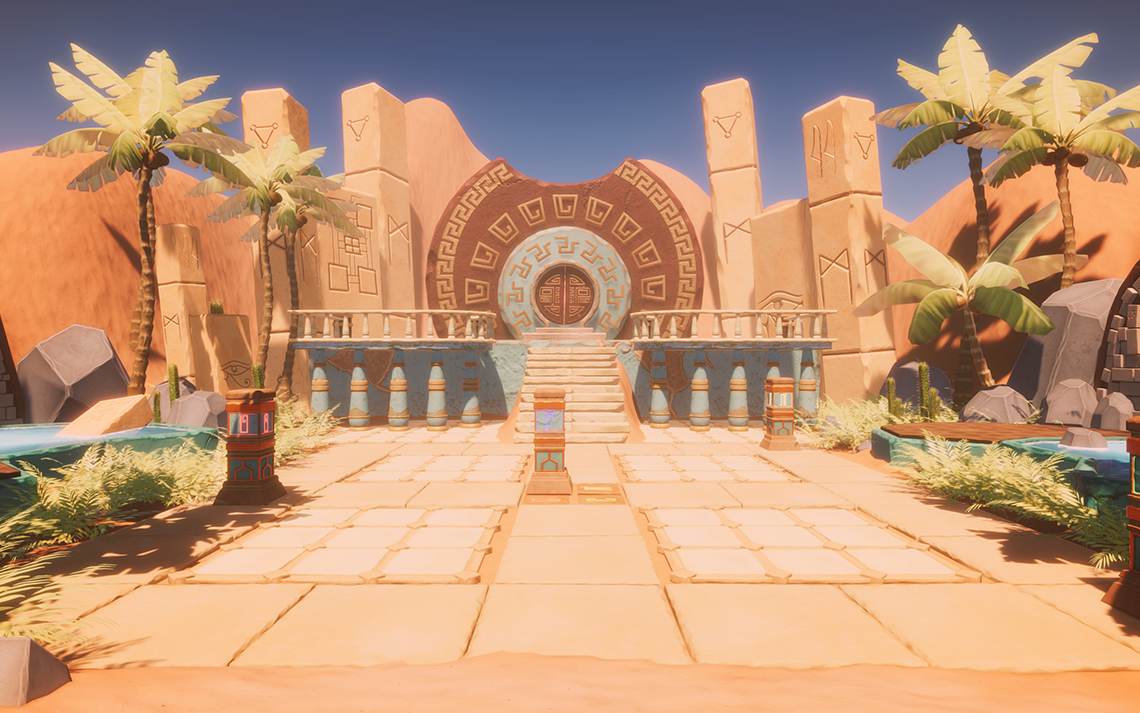
A game environment model designed with 3D modeling techniques, where every object of the game environment, including characters, terrain, etc., is designed in three dimensional.
3D game environment modeling provides players with a more immersive and interactive experience with realistic movements, dynamic lighting, shadows, and environment exploration from different angles. It enables players to a completely new world with more sense of depth and scale.
When it comes to 3D modeling, you must know two main types based on the polygons used in the game environment design studios, which are as follows:
Low Poly Game Environment
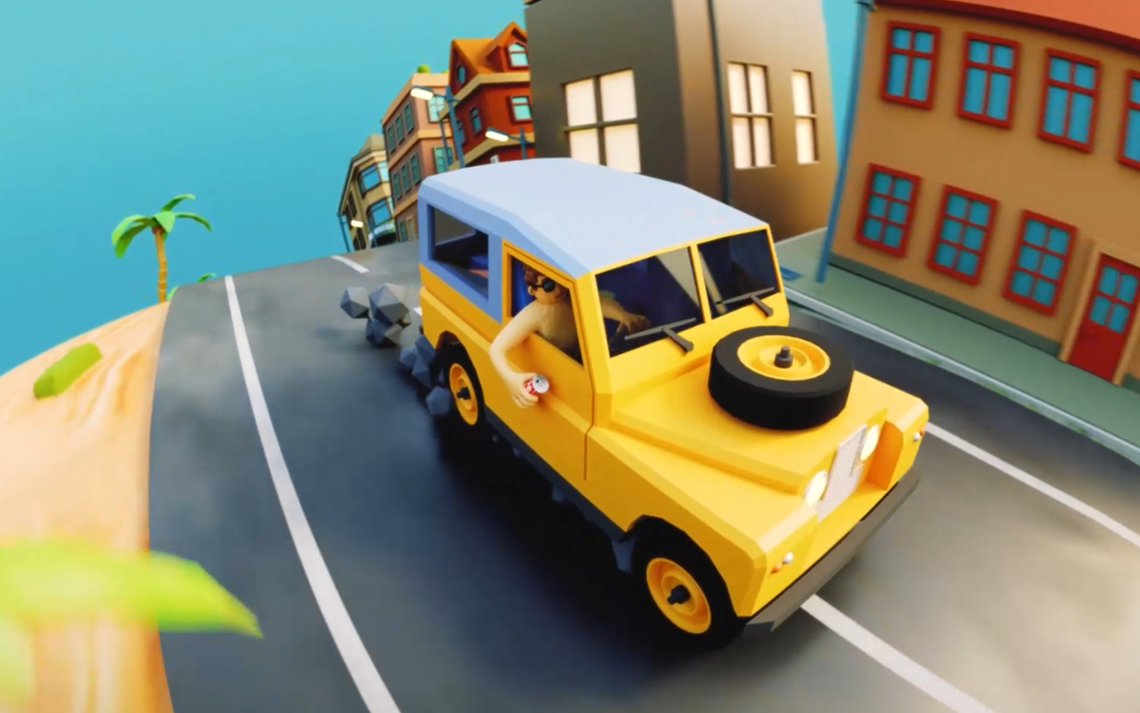
The low poly game environment contains 3D polygon-based visuals and objects that contain a fewer number of polygons – around 300+ polygons.
Of course, game visuals designed in a low poly design style might not be as appealing to see as high poly models but can provide a way better experience than 2D visuals.
The best thing about low poly 3D environment design is that it requires artists to spend less time and effort to design and render them. Low poly art models are used for designing secondary assets or to design simple backgrounds of game.
Moreover, these game art models are also preferred by experts to use when you require 3D game environment models but have less time for modeling and texturing.
High Poly Game Environment
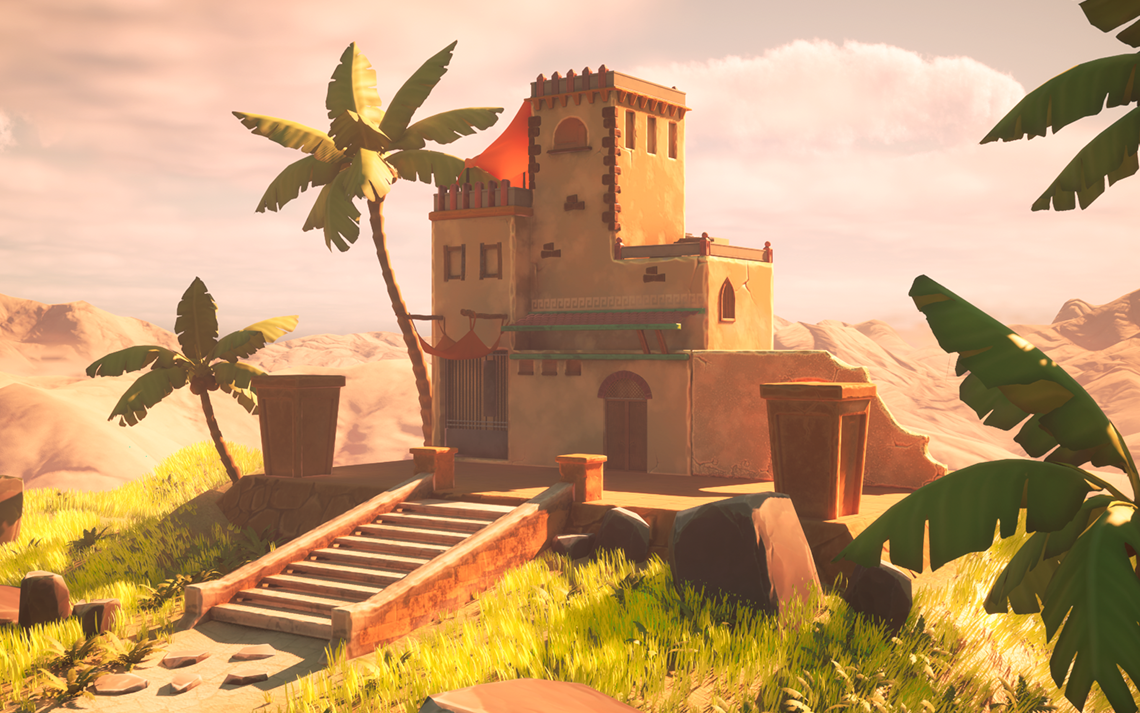
When there is a requirement for designing game environments with more details while ensuring high fidelity and realism, then high poly design models are used. High poly models often help you create game environments in a much better polished and natural way.
How Is Game Environment Modeling Different For Different Platforms?
Even though the environment remains the same, the screen size and design planning can vary. Therefore, it is crucial to discuss Game Environment Design and modeling for different platforms.
1. For PCs and Consoles
When designing a game environment for PC and consoles, it’s crucial to prioritize design, details, and visual clarity to ensure compatibility with larger screens. High-poly game design models are recommended to maintain visual quality and deliver an immersive gaming experience.
In addition to stunning visuals, focus on optimizing lighting, transitions, and incorporating well-fitted assets to enhance the environment and positively impact the game’s narrative.
2. Mobile phones
When designing a mobile game environment, it’s acceptable to focus less on intricate details due to the limitations of smaller screens. However, this doesn’t mean compromising quality—instead, opt for minimalism and low-poly design models.
Prioritize elements that fit seamlessly into the design without overcrowding the screen.
For larger screens, such as PC games, emphasize detailed designs to create a realistic and immersive experience for players.
Essential Building Blocks in Game Environment Modeling
When working on game environment modeling, you may require distinct expertise in game design to meet various modeling requirements, enabling you to create a cohesive and immersive game environment:
Static Modeling
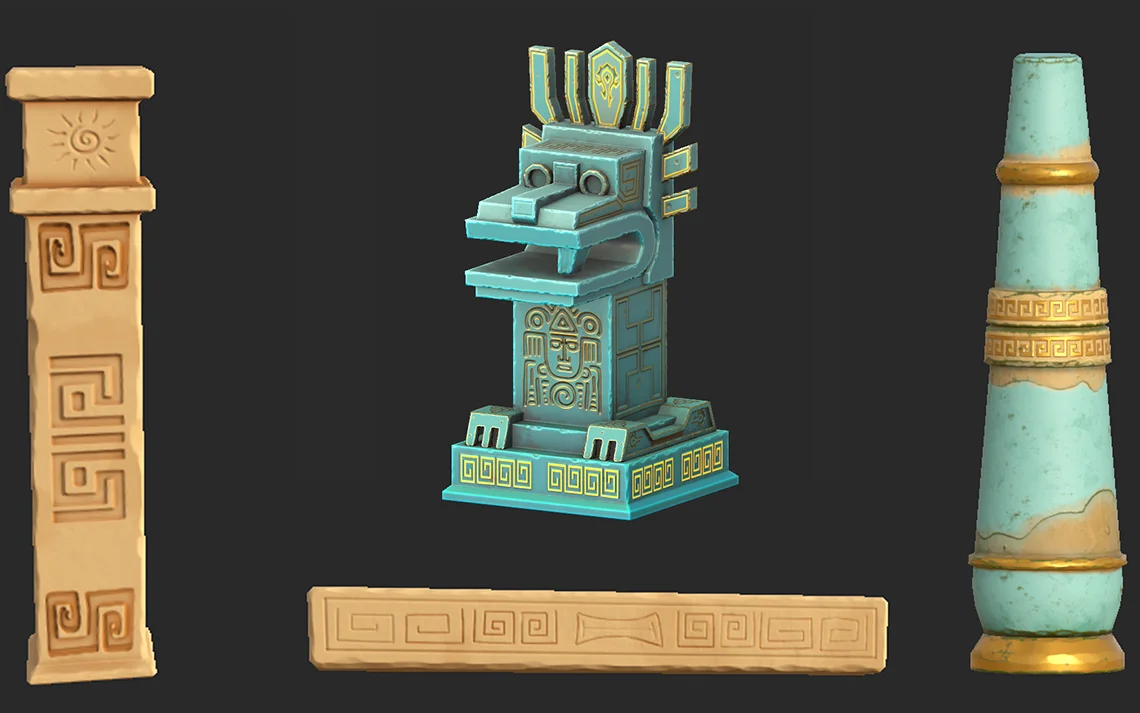
These are the bonus models in the game environment that are non-interactive and serve as backdrops for the game. These elements are pre-rendered and remain the same throughout the game – meaning does not change dynamically during gameplay.They play an essential role in elevating the game visuals.
Terrain Modeling
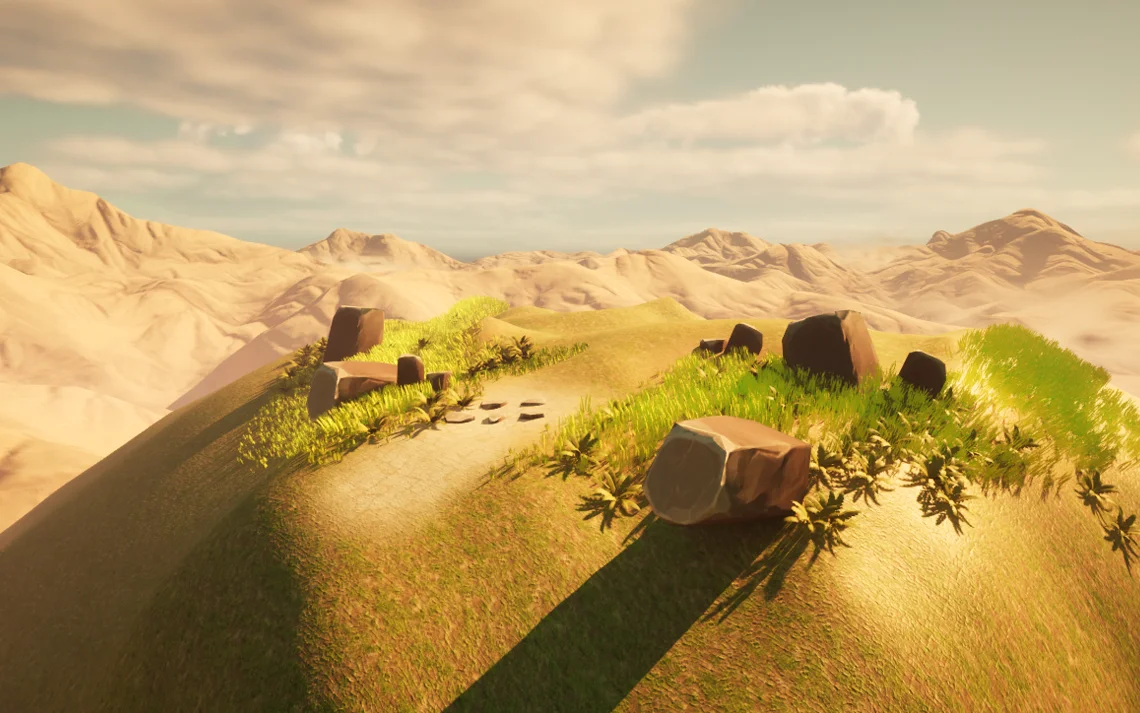
This type of modeling involves the creation of realistic, stylized landscapes, such as mountains, valleys, and other natural features. Game Artists utilize various technicals, like texture mapping, sculpting, and vegetation placement, to give the terrain a realistic look. For best results one must hire game designers.
Architectural Modeling
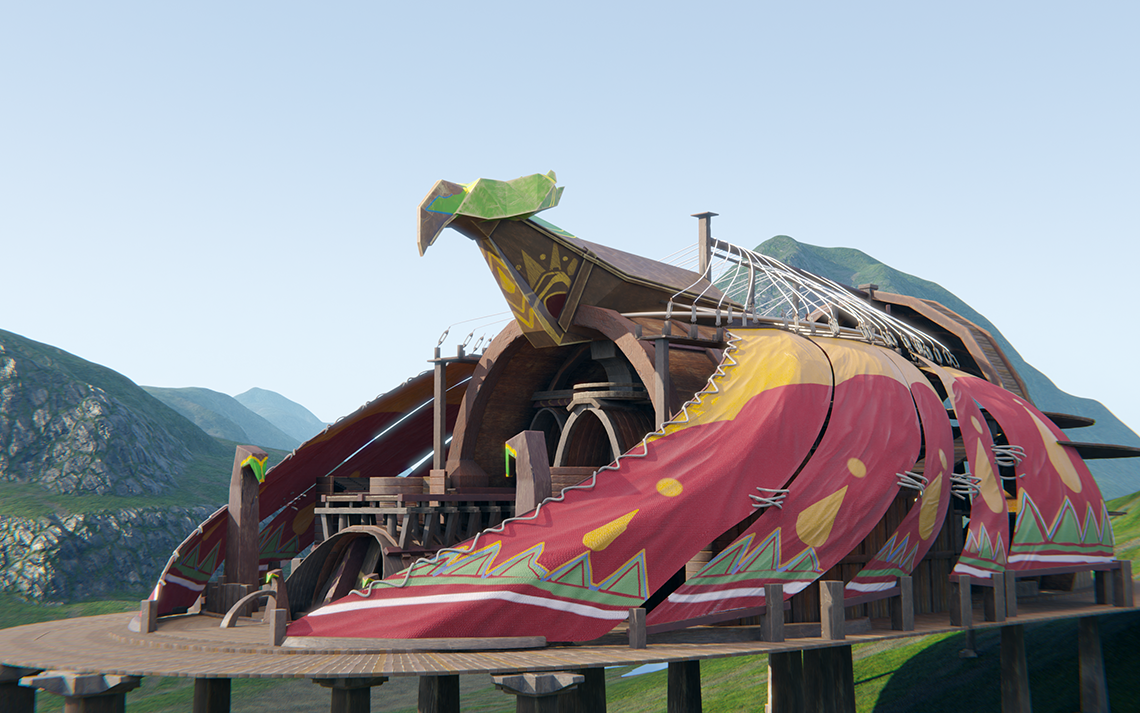
Architectural Modeling is used for designing detailed interior spaces, such as buildings, houses, or dungeons. Our 3D artists can help you craft stunning architectural elements within the game world.
Level Design
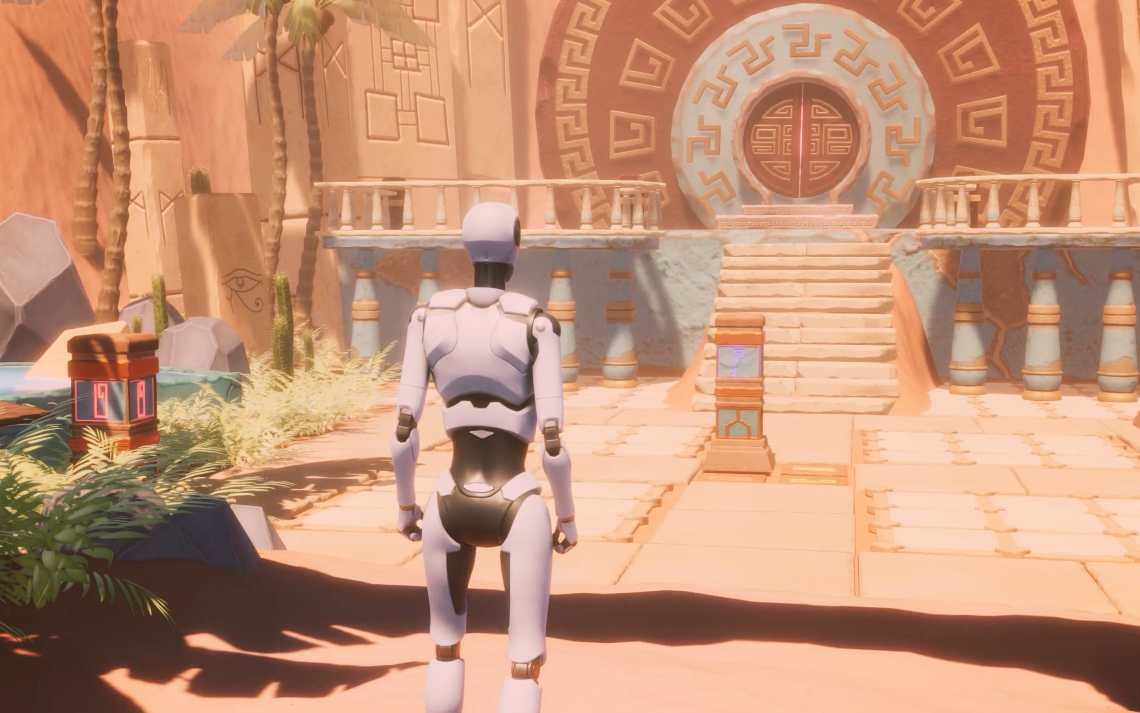
Game levels are what keep players captivated. So, level designers should usher players through their game objectives while creating challenges for players that motivate them to play it more.
Our level designers work closely with game designers to ensure to create interesting challenges with each new level.
Read Also: Stylized vs Hyper-Realistic: Which is Better for Game Art Design
Game Environment Modeling Considerations
After knowing the building blocks of game environment modeling, you do want to know some essential considerations to avoid further obstacles. So, let’s know game environment modeling considerations:
1. Choose The Appropriate Game Environment Aesthetics
Game aesthetics are considered the best when your players also vibe on the same level as you want them to experience. And this gaming mood setting is done by choosing the appropriate visual style of your game.
If you want your gamers to feel at ease with your relaxing mind game concept, you might want to go for the low poly design with a soothing color palette to give them a relaxed gaming experience.
On the other hand, when designing a game environment where your gamers’ excitement level is required, you can go for the highlighting, vibrant yet natural-looking color theme with shadows, lighting, and realism, to keep them focused and excited.
2. Source Your Game Design Inspiration
There is always an inspiration behind every game design idea you’ve got, and when planning to bring that to life, you must source your inspiration. Apart from that, you should also gather references to similar games with the details you like and have impressed their target audience. So taking reference from it, you can design your game environment in a much better way than that which will help you illustrate a better gaming experience.
3. Find The Right Game Engine
You must have heard of popular game engines like Unity and Unreal Engine, offering top-notch features to design visually stunning and highly detailed game worlds and their elements, characters, and more.
If you’re developing a game that requires a high level of realism and detailing, you can go for both Unity and Unreal Engine due to their competitive features and performance.
But for developing visually stunning 2D games, many experts advise going for Unity Game Engine as it provides more compelling features and supports for the same.
4. Set The Game Mood With Appropriate Light And Color Settings
Lights and colors play a vital role in setting up the mood of the game and its players, which makes it important for you to select and apply those appropriately.
Hence, in our game, Forbidden Islands, we used the dark night sky with other environment elements visualized in the sparkled, vibrant neon colors, creating a perfect alluring arena to explore.
The same goes with our star product ROFL – Roll Fall Land, where our game creators have used neon colors and lighting-based characters (Dice) and lands full of obstacles where the dice fall into the land and give thrills to our game players with each fall.
This is about the only two games we created, but we have a lot more to share with you regarding setting the mood and tone of the game world. Check out our gaming portfolio to know more about our expertise.
5. Look Into Details
The game environment is not just a design but an exploring experience that you want to provide to your players. So, you need to add enough details in your game design that can immerse players into it entirely.
Now that you got through the game environment modeling considerations, let’s move ahead with the next and the most important part of this blog, which will guide you through the process of creating game environments.
Guide to Game Environment Modeling
Here are the expert-suggested steps to create an immersive and engaging game environment that your players will enjoy exploring:
Planning
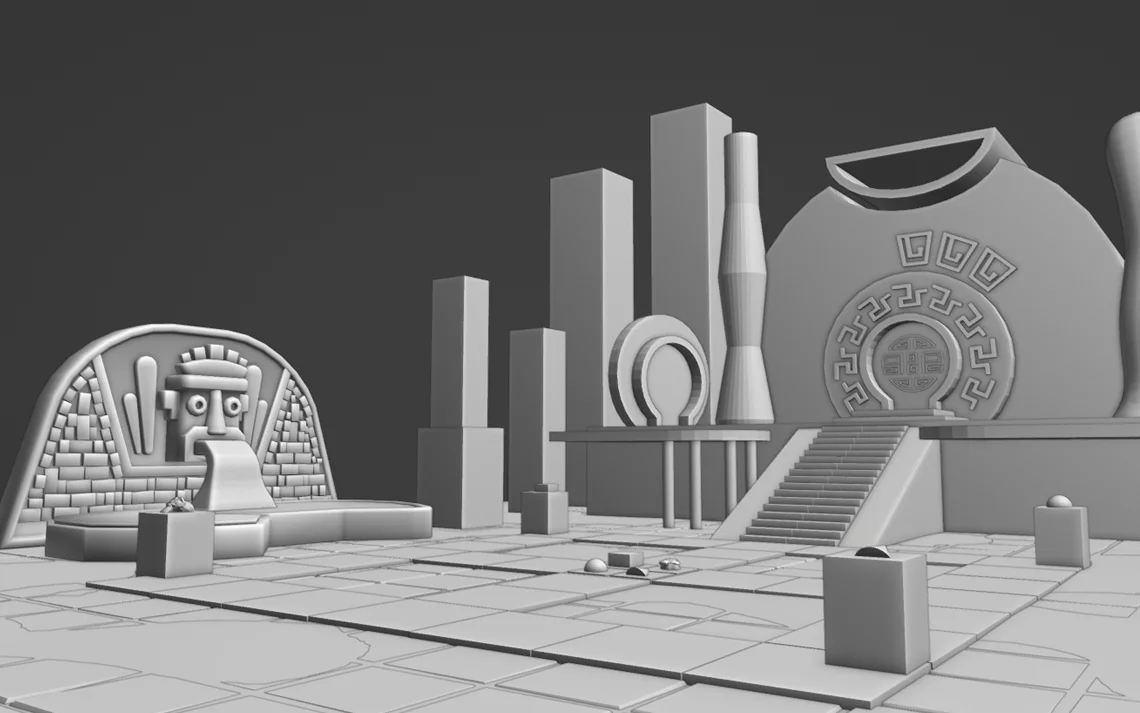
Having a game idea is really great, but to bring that concept to reality, you need to conduct your market study and gather references you’d want to consider further.
After the reference gathering, when you conduct deep reference analysis, you can get a clear idea about the models you want to create next and with what kind of details.
After this clear vision for the design, you can start with the rough grayboxing. But what is this grayboxing?
Greyboxing is a process of creating rough models or arrangements on a surface using blocks that give developers a hint of what kind of basic structure will come and start the development alongside the design process, resulting in smart working and time-saving.
This process gives you time to think about and add details to that arrangement and undo it if you feel like you can do better in the design.
3D Modeling
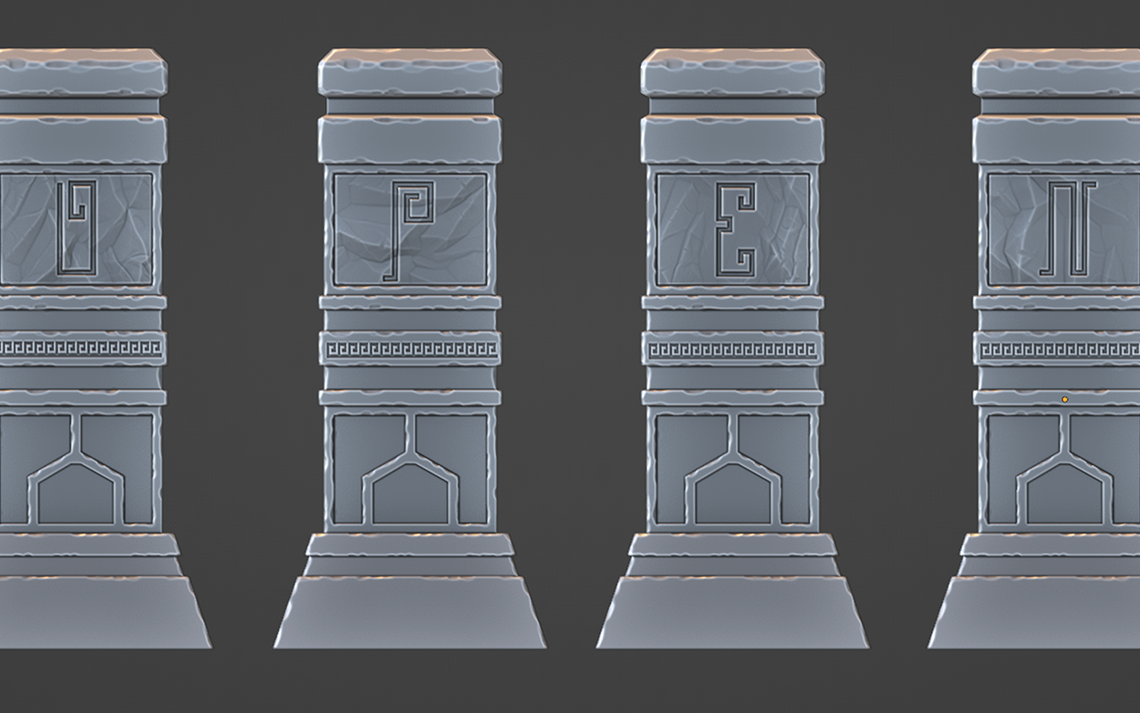
After creating the gray boxes, it’s time to go for 3D modeling to give your rough boxes a detailed touch.
You’ll find many 3D modeling tools to create game objects, but many 3D modeling artists suggest using design tools like Unity or Blender to create them finely. When doing so, 3D environment artists prepare meshes of game assets to fill their details in the later part.
Some 3D modeling tools may provide automation features to automatically generate objects, but when needed, high-quality and innovative models should be done manually.
UV Mapping & Texturing
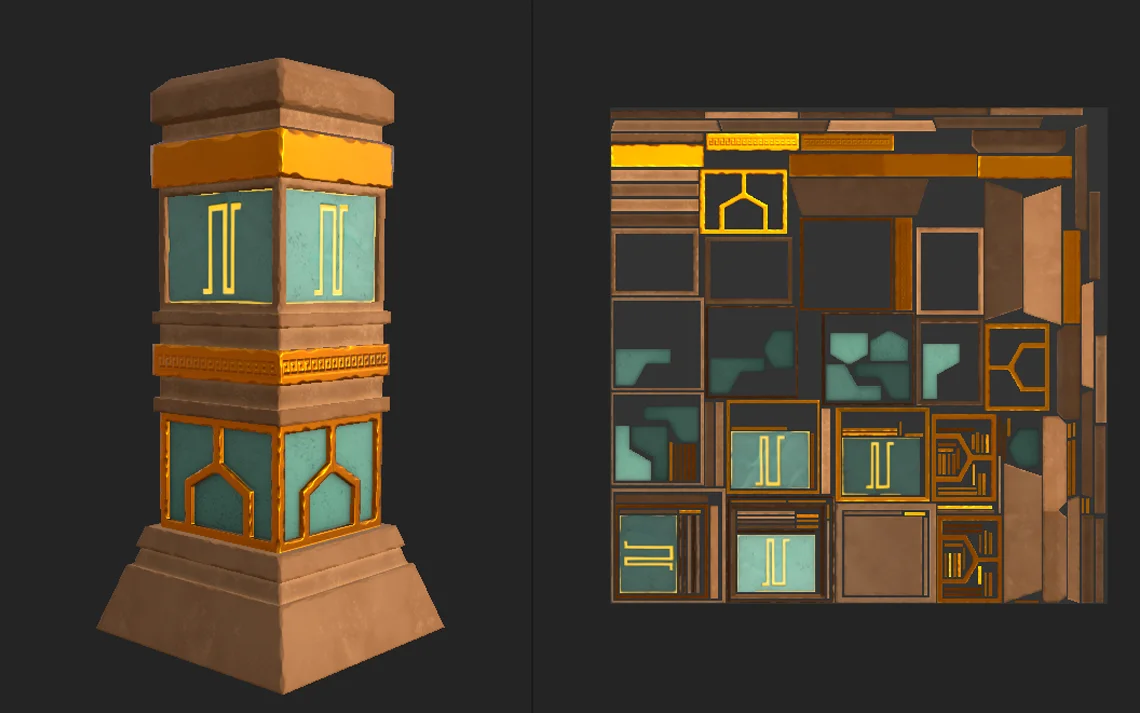
Now, it’s time to do the UV mapping, where U stands for the horizontal axis, and V stands for the vertical axis. It is a process of generating a 2D representation of a 3D object. The objective of doing UV mapping is to generate a link between a surface mesh and image texture, controlling pixels on the texture adjacent to the 3D mesh vertex.
When applied texturing on UV mapping, it helps to bring your game environment concept to life. The main point of using texturing is to create environment materials matching up with the game concept. It also makes it possible to edit the expanded models.
Moreover, the applied 2D graphics on the 3D models make the game environment and assets look more realistic. To do so, both Unity UV editor and Unreal Engine Texturing come of great help.
Lighting & Game Animation
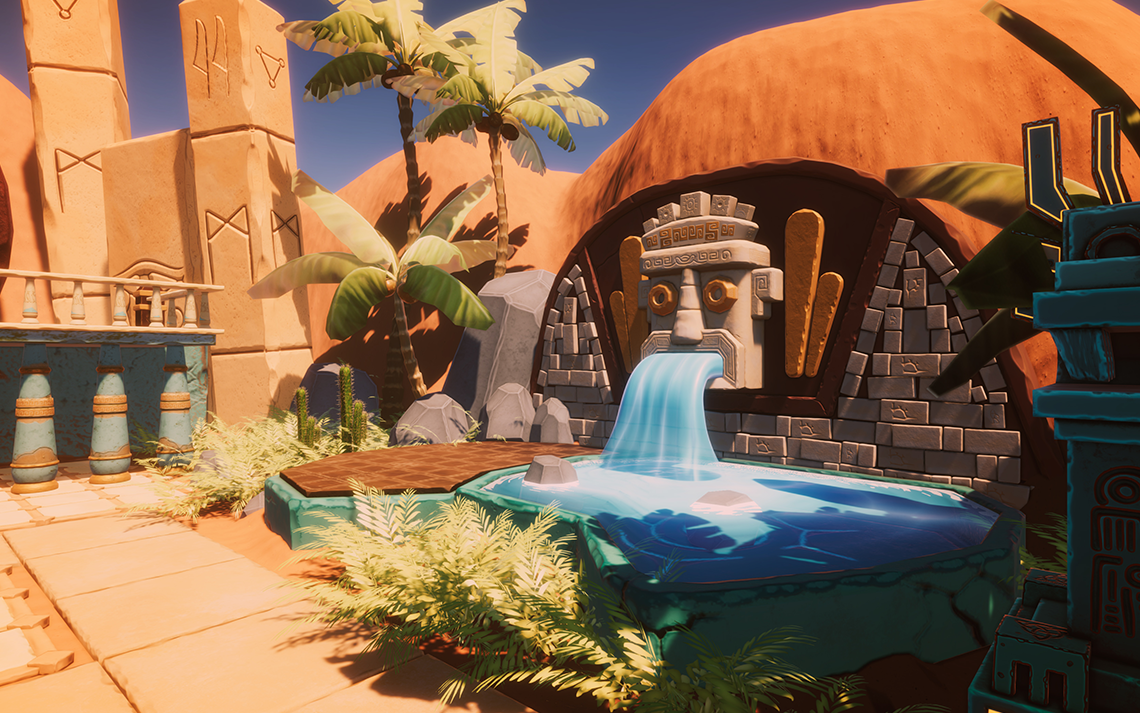
Well, you’ve created your 3D game elements realistic, but to give this feeling to players, you need to apply lighting and some animation. Lighting helps to add another layer to the 3D game environment and makes it look more alive. If you’re exploring how lighting enhances realism and depth in gameplay, understanding the importance of lighting in game design is essential.
Well, in the game world, you can add lighting in the form of shadows, highlighting any particular asset, or any other way to give your subject a more realistic look.
In game design, visual effects (VFX) and animation also play a crucial role. And you can add it in the form of wind, air, smoke, or any other atmospheric element.
Once you have done this edit in your freshly created game environment, then your amazingly compelling game environment is ready to be incorporated into your code and final game.
Game Environment Modeling Challenges
Well, after knowing the process of creating a game environment, you do want to know the challenges which you can face throughout the process. So you can be prepared to deal with those challenges early on. Let’s take a look at potential game environment modeling challenges:
Realism
Well, many game designers perfectly create the 3D modeling of the game environment, but giving it a realistic and believable touch is very crucial, which is a tough nut to crack.
Level of Detail (LOD) Management
Every game player wants to have a game visual of their perspective with real-time performance. So, to achieve that LOD technique is often used to maintain the level of detail (like seen as more detailed and reduction in the level of detail when going) as they come near and go far away.
Procedural Generation
In this technique, the game environment designer is asked to diverse environments dealing with varied landscapes. And in this type, designers may face a challenge in ensuring uniformity in distinctiveness, or we can say balancing randomness.
Dynamic Player Interactions
Well, designing and achieving an environment that interacts with the player’s every action in a realistic and consistent manner can be a bit complex, especially in highly dynamic, simulation-heavy games.
How Can 300Mind Assist You In Game Environment Modeling?
After getting through the challenges, you might have gotten an idea that you’ll need assistance from professional game environment designers. And when you hire a game development partner like 300Mind, you get extensive support to develop custom game environments like no one has ever designed before.
We have extensive expertise in 2D and 3D game development with motion graphics and animation. In short, we provide full-service game design and development solutions to deliver you the cutting-edge gaming solution you need. Reach out to us with your requirements for us to provide you with a world-class gaming solution.
FAQs on Game Environment Modeling
Well, we cannot directly say the cost for the same as it depends on factors, like the genre of the game, research requirement, the level of the design complexity and uniqueness, the type of visual elements you want to add to the design, and a lot more.
While game design covers game concepts, mechanisms, levels, and user experience, game art focuses on the creation of the characters, environment, visual effects, and a lot more.
